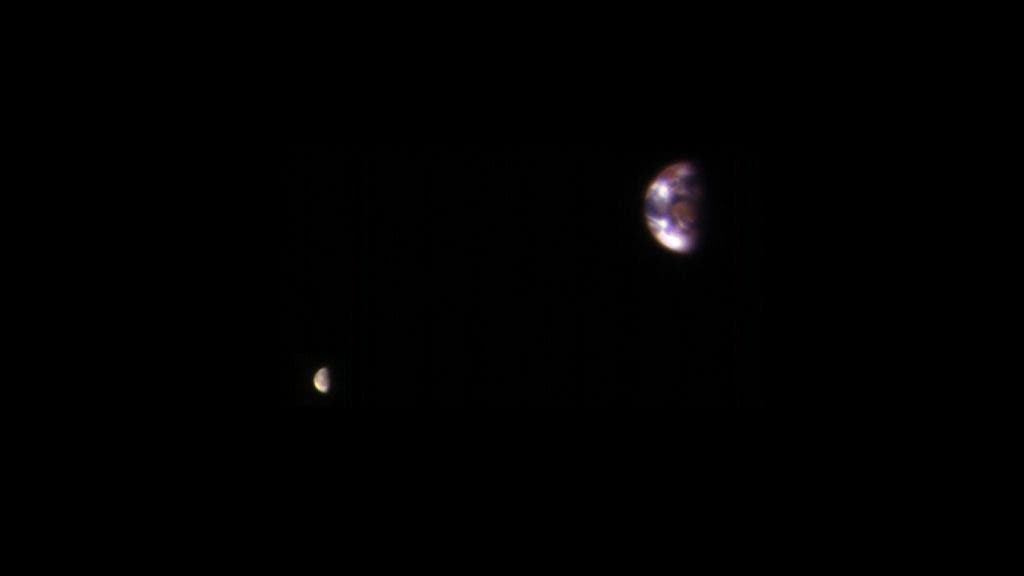By now, we’ve become accustomed to marveling at the images of cosmic objects — some nearby like the solar system’s planets, others much farther away like distant galaxies. High-res images of nebulae, quasars or Jupiter’s magnetic storms are all simply stunning and a testament to how far science has gone. But despite the deep implications of such observations, both scientific and philosophical, we sometimes risk overestimating our role in the cosmos. Even unconsciously, an Earth-centric observational viewpoint can give the impression that we’re the pinnacle of the universe when, in fact, humans have been around for only an instant at a cosmic scale and occupy a pale blue dot, as Carl Sagan used to call Earth.
If you don’t feel humble yet when faced with the infinite possibilities and scale of the Universe, this image recently beamed back by NASA’s Mars Reconnaissance Orbiter will change your mind. The view combines two images taken by the orbiter’s HiRISE camera on Nov. 20, 2016, whose brightness was adjusted so that details of Earth and its moon could show.
Take a moment to contemplate the significance of this view taken from 127 million miles away by a spacecraft we built. And if you look close enough, you might even recognize the continent or country you call home. The reddish feature at the center is Australia and the bright white feature at the bottom of the Earth is Antarctica. Right above Australia is East Asia.
https://www.youtube.com/watch?v=b58SfRphkKc










